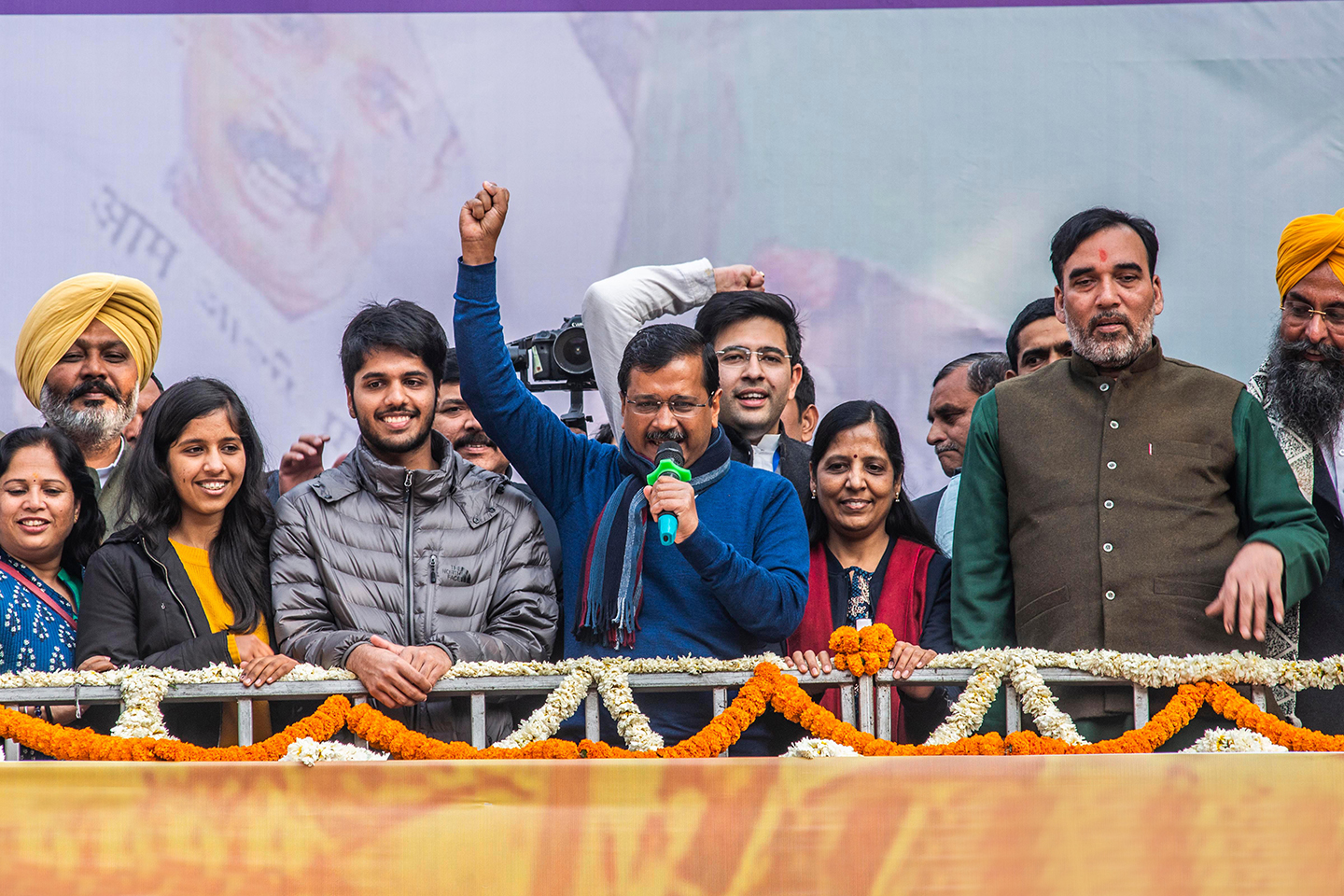Schemes like waiving farm loans count as freebies too
WE LIVE in the age of spin.
Given this, it is hardly surprising that the Aam Aadmi Party’s victory in the Delhi state election has been spun into a victory of freebies. Freebies work, but Arvind Kejriwal wasn’t the first person to figure this out.
The Roman poet Juvenal, who lived in the late first and early second century AD, spoke about “breads and circuses”, or the superficial appeasement of voters that the politicians indulge in.
Let’s take a look at examples that are closer to home and come from the recent past.
The PM-Kisan Scheme, which pays Rs 6,000 per year to all farmer families across the country in three equal installments of Rs 2,000 each every four months, was launched by the current central government led by Prime Minister Narendra Modi. The allocation to the scheme in the 2020-21 budget stands at Rs 75,000 crore.
This is also a freebie.
Over the last few years, waiving off farm loans has become a necessary condition for any and every party looking to do well in the state Assembly elections. As the Reserve Bank of India report, State Finances: A Study of Budgets of 2019-20, points out: “Since 2014-15, 10 states have announced loan waiver programmes of an aggregate amount of Rs 2.3 lakh crore (1.4 percent of GDP), significantly higher than the previous two nation-wide debt waiver programmes — Rs 10,000 crore in 1990 and Rs 52,500 crore in 2007-08.”
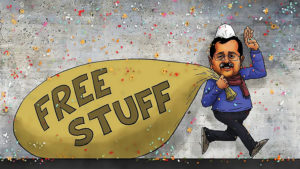
The first nationwide farm loan waiver was announced in 1989 by the then deputy prime minister, Devi Lal, who was himself a large farmer. It was done through the Agricultural and Rural Debt Relief Scheme, 1990. The loan waiver of Rs 10,000 crore would amount to Rs 50,600 crore, as per 2016-17 price levels. The farm loan waiver in 2007-2008 was announced by the first United Progressive Alliance government. This waiver in 2016-17 price levels would amount to Rs 81,200 crore.
It needs to be pointed out here that while states have announced waivers worth Rs 2,31,260 crore — to be very precise — they haven’t been able to implement these waivers totally.
Between 2014-2015 and 2019-2020, loans worth Rs 1,54,418 crore are expected to be waived off (I say expected, because the 2019-20 numbers are estimates). What this tells us is that while it is easy to announce a farm loan waiver, it is difficult to totally implement it, given that the budgets of most states are already very stretched. So, getting back to Arvind Kejriwal and his freebies.
Delhi is an urban state and to that extent, Kejriwal couldn’t have announced farm loan waivers. So, the freebies that Kejriwal announced are actually his farm loan waiver. The point is that almost every politician in India offers freebies to continue to stay relevant. To that extent, Kejriwal is no different. But as the famous line from the 1975 movie Deewar goes, “Doosron ke paap ginane se khud apne paap kam nahi ho jaate.” Counting the sins of others does not reduce one’s own sins.
It is important to look at the finances of the government of Delhi. Let’s first take a look at the fiscal deficits of various state governments in Figure 1. Fiscal deficit is the difference between what a government earns and what it spends.
The fiscal deficit of the Delhi government in 2019-20 is expected to be at 0.7 percent of the state’s GDP. This is by far the lowest in the country. So to that extent, the freebies aren’t really disrupting government finances.
The freebies that everyone likes to talk about are free electricity (up to 200 units), free water (of up to 20,000 litres), and free bus and metro rides for women. In the budget for 2019-20, the Delhi government had allocated Rs 1,720 crore for the electricity subsidy, Rs 468 crore for water subsidy, and Rs 108 crore for the concessional DTC passes.
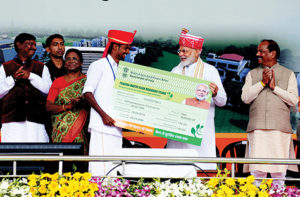
The “free metro ride for women” idea came during the course of 2019-20, after the budget for the year had been presented. In late August 2019, a total subsidy of Rs 290 crore was set aside for free travel of women in DTC buses and the Delhi metro (upped from the Rs 108 crore that had been set aside for free DTC rides earlier).
If we were to add these amounts, it comes to Rs 2,478 crore. The Delhi government hopes to make a total expenditure of Rs 60,000 crore in 2019-20. Hence, subsidies amount to around 4.1 percent of the total budgeted expenditure for the year.
It’s fair to say this isn’t much. Now, compare this to the total subsidy bill of the union government in 2019-20. It is expected to be Rs 2.64 lakh crore against an expected expenditure of Rs 26.99 lakh crore. Subsidies form 9.8 percent of the union government’s budget. Also, it needs to be pointed out here that food subsidies of more than Rs 2 lakh crore are not a part of this budget. Over and above this, schemes like PM-Kisan don’t come under the head of subsidies. If these were to be added, the freebies being provided by the union government will be much greater than 9.8 percent.
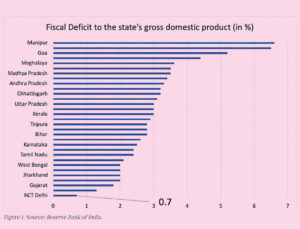

In that sense, the freebies provided by the Delhi government are certainly under some control. While economists will maintain freebies are always a bad idea, politicians don’t function like that.
Having said that, it needs to be pointed out that the fiscal deficit of the Delhi government has been going up over the years. Take a look at Figure 2.
The fiscal deficit in 2016-2017 was at 0.2 percent of the state’s GDP. It fell to zero percent in 2017-2018 and has since jumped to 0.7 percent. There is no real reason to worry on this front, as long as Kejriwal and the Delhi government do not overdo the freebie bit.
One of the promises in the manifesto on which AAP fought the February 8 election is taking 10 lakh, senior citizens, for Teerth Yatras over the next five years. This is stretching it too far, not just because it will cost a lot of money, but also because Indian governments simply do not have the capacity to implement such decisions. Also, this money will be better spent somewhere else, like making more hospital beds available for senior citizens.
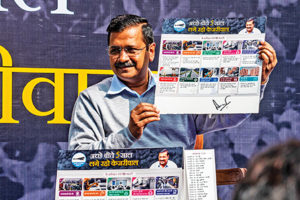
The government has plans to provide housing for slum-dwellers. Again, a noble idea. But before the government goes about this, it should be clear on how it plans to finance this. How much money does it intend to spend during the course of the year? Where is the money going to come from? All this will help the finances of the Delhi government to continue to look good. And a government with healthy finances can achieve much more by delivering what it has promised. And that’s the long and the short of it.
Vivek Kaul is the author of the Easy Money trilogy.
www.newslaundry.com

